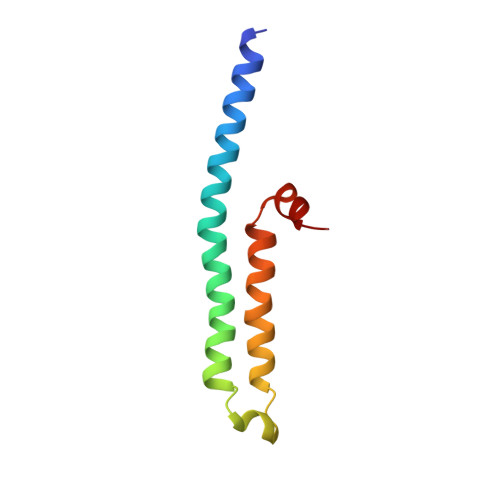Structure-Guided Design Affirms Inhibitors of Hepatitis C Virus P7 as a Viable Class of Antivirals Targeting Virion Release
Foster, T.L., Thompson, G.S., Kalverda, A.P., Kankanala, J., Bentham, M., Wetherill, L.F., Thompson, J., Barker, A.M., Clarke, D., Noerenberg, M., Pearson, A.R., Rowlands, D.J., Homans, S.W., Harris, M., Foster, R., Griffin, S.D.C.(2014) Hepatology 59: 408
- PubMed: 24022996
- DOI: https://doi.org/10.1002/hep.26685
- Primary Citation of Related Structures:
3ZD0 - PubMed Abstract:
Current interferon-based therapy for hepatitis C virus (HCV) infection is inadequate, prompting a shift toward combinations of direct-acting antivirals (DAA) with the first protease-targeted drugs licensed in 2012. Many compounds are in the pipeline yet primarily target only three viral proteins, namely, NS3/4A protease, NS5B polymerase, and NS5A. With concerns growing over resistance, broadening the repertoire for DAA targets is a major priority. Here we describe the complete structure of the HCV p7 protein as a monomeric hairpin, solved using a novel combination of chemical shift and nuclear Overhauser effect (NOE)-based methods. This represents atomic resolution information for a full-length virus-coded ion channel, or "viroporin," whose essential functions represent a clinically proven class of antiviral target exploited previously for influenza A virus therapy. Specific drug-protein interactions validate an allosteric site on the channel periphery and its relevance is demonstrated by the selection of novel, structurally diverse inhibitory small molecules with nanomolar potency in culture. Hit compounds represent a 10,000-fold improvement over prototypes, suppress rimantadine resistance polymorphisms at submicromolar concentrations, and show activity against other HCV genotypes.
Organizational Affiliation:
Leeds Institute of Cancer & Pathology & CRUK Clinical Centre, Faculty of Medicine and Health, St James' University Hospital, University of Leeds, Leeds, West Yorkshire, UK; School of Molecular & Cellular Biology & Astbury Centre for Structural Molecular Biology, Faculty of Biological Sciences, University of Leeds, Leeds, West Yorkshire, UK.














